By TREVOR HOGG
By TREVOR HOGG
Images courtesy of CBS Studios, Inc.
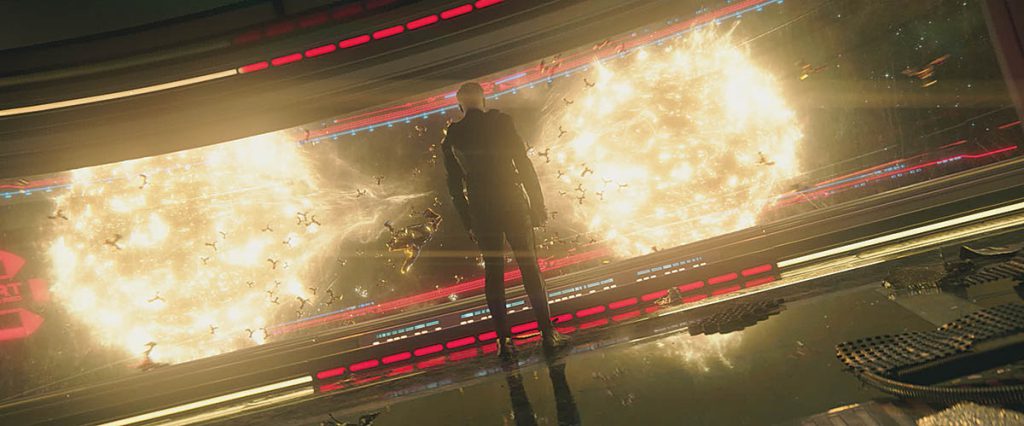
Captain Christopher Pike helmed the USS Enterprise in the original pilot for Star Trek, but NBC rejected it, resulting in the name change to Captain James T. Kirk, who went beyond the realm of television and film to become a pop icon. Despite being replaced, Pike did not become a footnote but appeared in an episode of the original series and on the big screen over half a century later. Things went into hyperdrive for the Starfleet officer when a guest appearance on Star Trek: Discovery paved the way for him to reclaim leading man status with the production of Star Trek: Strange New Worlds, which revolves around his galactic expeditions on behalf of the United Federation of Planets. The third season, consisting of 10 episodes, does not shy away from exploring different genres with an irreverent wit and expanding the scope of the unexplored cosmos by utilizing virtual production.
“There is a variety of different stories and approaches to things in Star Trek: Strange New Worlds,” states Jason Zimmerman, Supervising Executive & Lead Visual Effects Supervisor on the show. “They’re not afraid to try out different ideas and tell a variety of stories. It’s always cool because when you read the scripts, you may not have the bigger picture of things, and when you finish the season, you look back and go, ‘That worked great.’” The goal was to capture the spirit that Gene Roddenberry infused into his innovative space western that aired during the late 1960s. “This show is taking those classic moments and themes of the original series and bringing them into the present,” remarks Brian Tatosky, Visual Effects Supervisor. “The original series had different tones to episodes, like more serious or lighthearted. What Strange New Worlds has done is push that even farther to where we have genre episodes within our episodes. Visual effects is about supporting those scripts. If it’s a funny episode, we need to make sure that our stuff fits. If it’s a scary episode, the sets and effects have to be as scary as possible.”
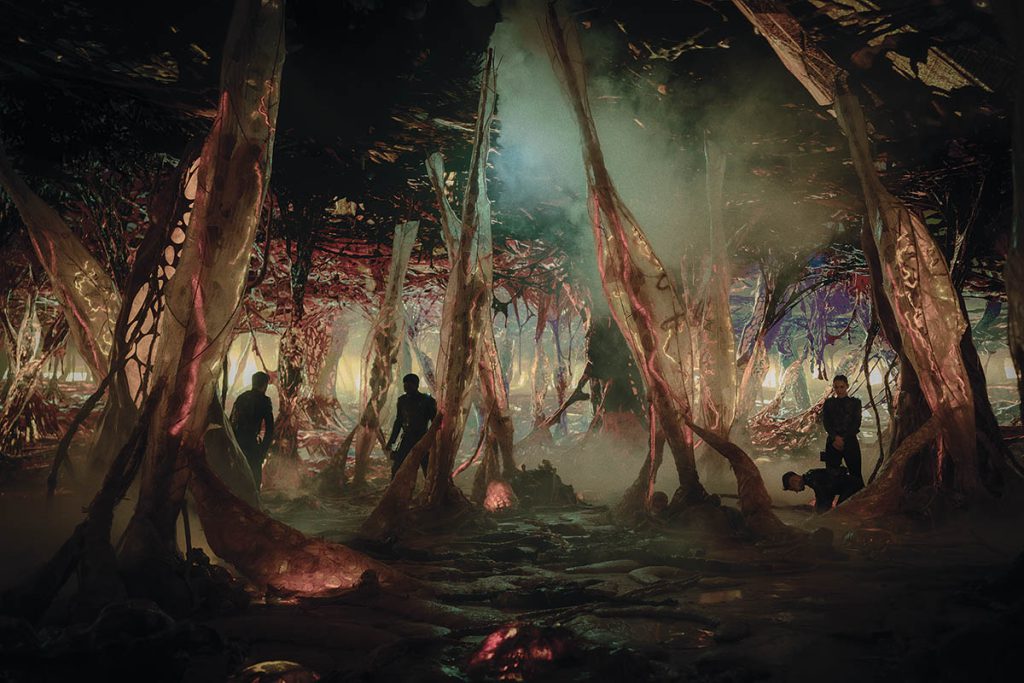
Virtual production has become a significant component of world-building. “The main difference for us on this show and on the shows where we do virtual production is we’re building something for the day we shoot,” Zimmerman states. “We’re not prepping for something that we know is coming in post. It requires more urgency and interaction with the different departments to make sure we’re aligning with what they’re planning. If you’re talking about something like an Engineering set, a lot of that is practical in terms of what they’re interacting with. The graphics, to [First Assistant Art Director: Motion Graphics] Timothy Peel and his team’s credit, are mostly practical, so we’re not planning for a lot of monitor comps later on. The most successful assets have always been those that start something practically and iterate it into a virtual asset. In that way, you’re able to hide the effect. No one knows where it starts and ends. Some of those assets are organic in nature, like the Gorn hive, which was a virtual production asset, and yet we had practical pods. They could sit in the foreground, which pushed everything away in depth and made it feel like it was all one piece, as opposed to something like Engineering, which is all hard surfaces but requires interactive lighting. It’s interesting because each one is different and custom to the story.”
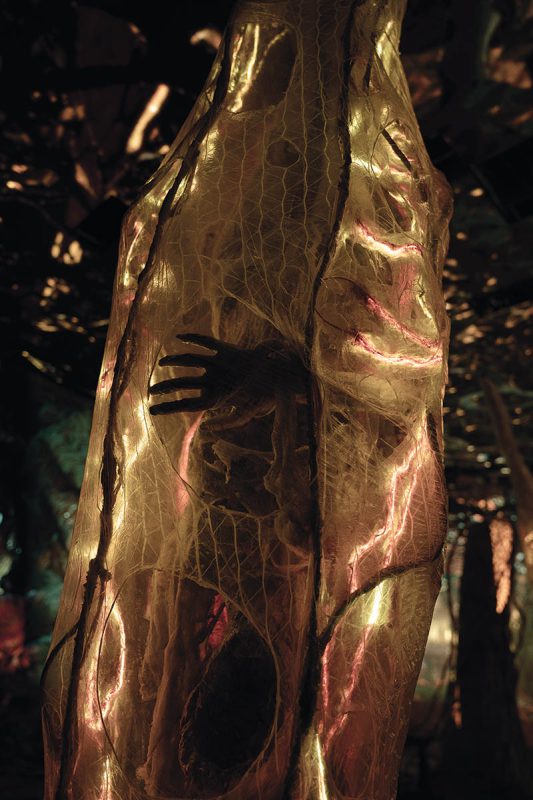
Not every alien encounter is friendly. “Luckily, through our tenure on Star Trek, we have done a few space battles,” Zimmerman notes. “We have learned a lot about what to do and not to do along the way. Fortunately, in Episode 301 with the Gorn, we have Chris Fisher directing, who has been with us since the start. He’s our EP and PD [Producing Director]. Chris loves to storyboard and interact with everybody. It’s about the prep. It’s different from a virtual production where everybody is working towards a common thing, although there was some virtual production playback hidden in those sequences. Primarily, it’s about the choreography of things and establishing a geography. We start to previs the minute we get his boards. We might even be doing previs while he’s beginning to shoot. If something comes up on set where we go, ‘They’re looking more this way,’ we can adjust our animation to match. What Chris plans typically holds, and that’s helpful for us because we’re not scrambling to try a new direction or change something in post.” There is an offshoot component associated with virtual environments. “Before even the storyboards, they can be mulling around in the creative process,” Tatosky remarks. “We can show them potential shots and layouts of where things need to go in a sequence if characters need to get from Set A to Set B. When shooting begins, they have a better idea of how the pieces fit together from day one, which means fewer shots and retakes.”
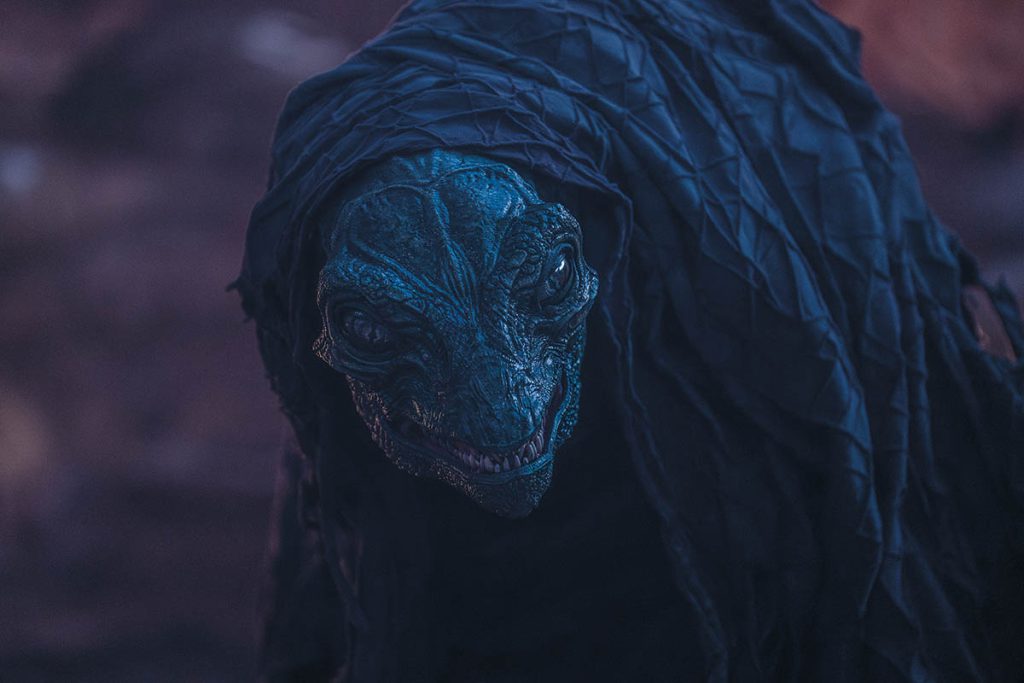
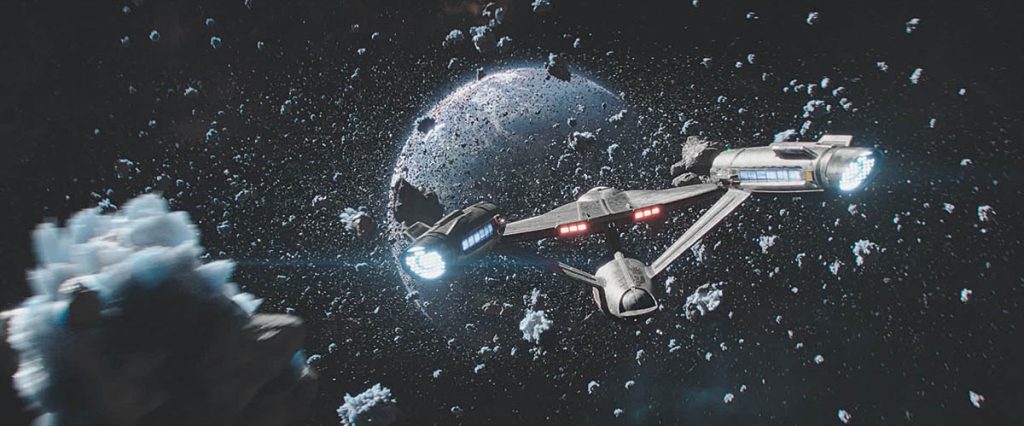
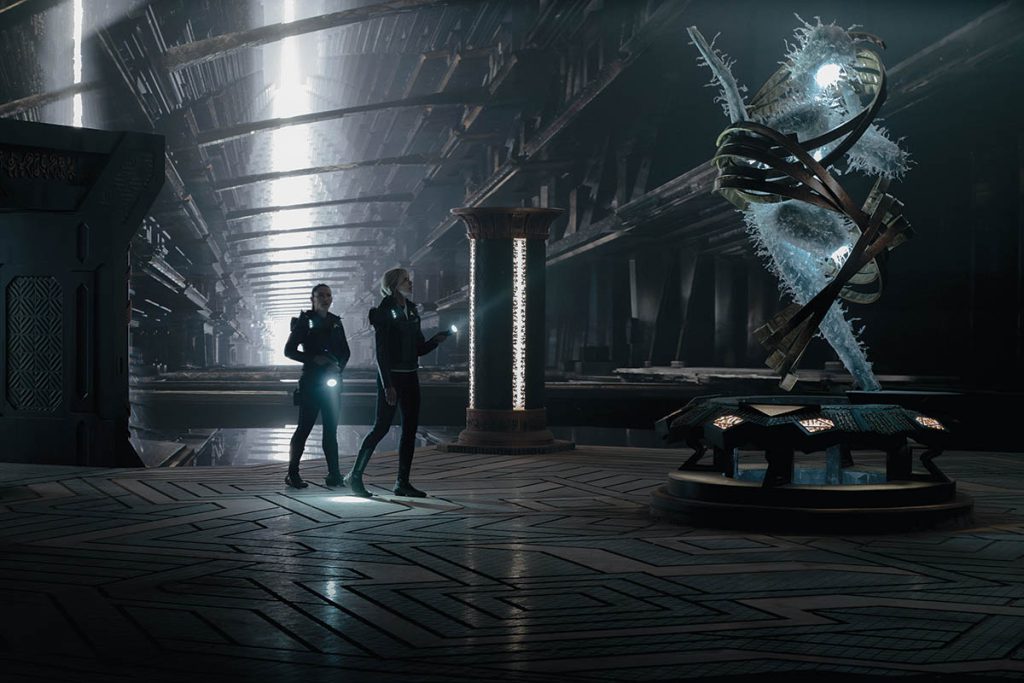
Among the threats that Pike and his crew encounter are Klingon zombies. “There are a few things in visual effects that you want to play with, and zombies are at the top of the list,” Zimmerman laughs. “Other than the shots that are obvious visual effects, which we’re either keeping out or in with a containment field or bursting into particles, all the zombies you see are special effects makeup. It was done on a virtual production asset, when they’re on top of that plateau where the shuttle lands. We had our moments where we got to play in the sandbox. You would log into QTAKE to see what they were doing on set on the day, and they were on a different planet with zombies. There was nothing we had to do later for that. The table was set for us.” The Gorns had practical and digital versions. “There was a guy in a [mocap] suit, as well as CG, for when they’re hanging upside down on the ceiling,” Zimmerman explains. “I’m sure the actors are so much happier having something that is live in the scene to interact with. It helps us in terms of our lighting and textures to have them all marry together. We might add a blink or some drool, but there is a nice division of labor between what we do practically and digitally that helps to sell the creatures in their environment. When you see somebody being held up by a practical Gorn, it feels so much more visceral and real. We like working that way.”
First appearing in Star Trek: The Animated Series and transitioning to live-action with Star Trek: The Next Generation, the Holodeck has a near disastrous test run that nearly kills its user and cripples the Enterprise. “The fun part is figuring out how thick you want the yellow lines to be on the Holodeck because it has changed over the show’s seasons even in Star Trek: The Next Generation,” Tatosky notes. “Then looking at the original effects of the transitions into Holodeck sets in TNG and going, ‘We want to honor that, but there has been enough time that we should upgrade these things a little bit and make them more visually complex because the viewer of today expects more than essentially a cross dissolve, which was what a lot of these effects were.’ I loved the scripting of it all, including why they’re using the Holodeck and what happens as a result. It fits into the Universe, and they get to tell a funny story with a lot of neat twists and turns that the audience will enjoy.”
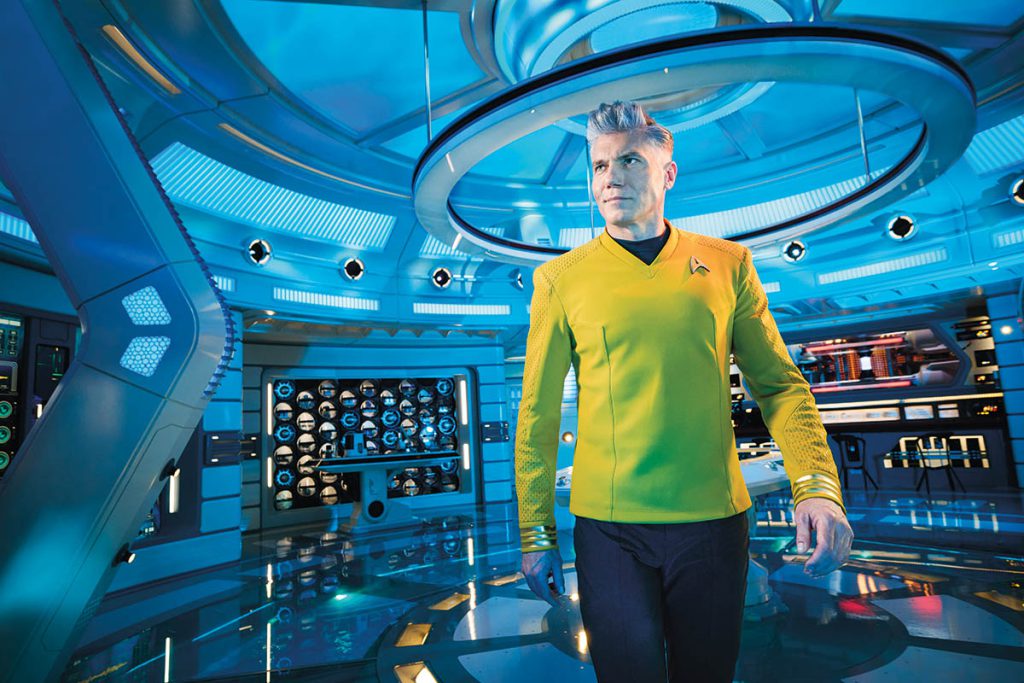
Among the new environments visited by the Enterprise is an ancient prison that uses quantum physics to entrap a malevolent life force that resembles glowing fireflies. “The background was meant to move and feel infinite in the space,” Zimmerman states. “That was a virtual production asset, so it’s a perfect example of something that we started designing the minute we knew it was an idea. There are technical challenges because you’re creating a massive environment that has to move. We have to make sure that it performs well on the wall. You have to make sure that it is lit properly because it has this bright backlighting, but it’s also supposed to be this moody, mysterious space as well. It was a fun one to construct because of the scope, and in our world, where we build so much in the future, this was meant to feel more ancient but still part of the Star Trek Universe.” The imprisoned life force is in a container that explodes like a flash grenade and scorches the eye sockets of a medical officer. “It’s supposed to be a horrifying moment,” Tatosky notes. “We’re not an R-rated film, but we still have to emphasize how awful it is.” Prosthetic makeup was an important component of the effect. “Blending with what was done practically was helpful to us,” Zimmerman remarks. “It saves you some wide shots and allows you to see what the light is doing near the eye. When the head turns a certain direction and it starts to fill with light, you can see that cavity more clearly.”
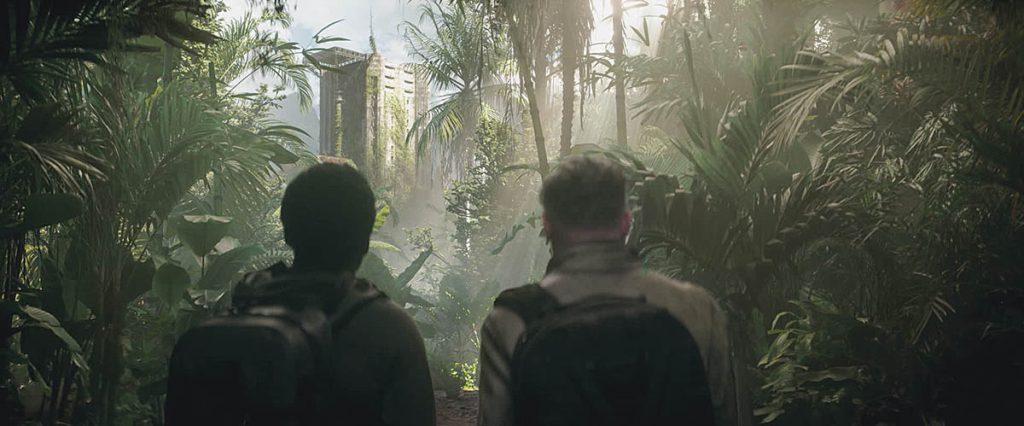
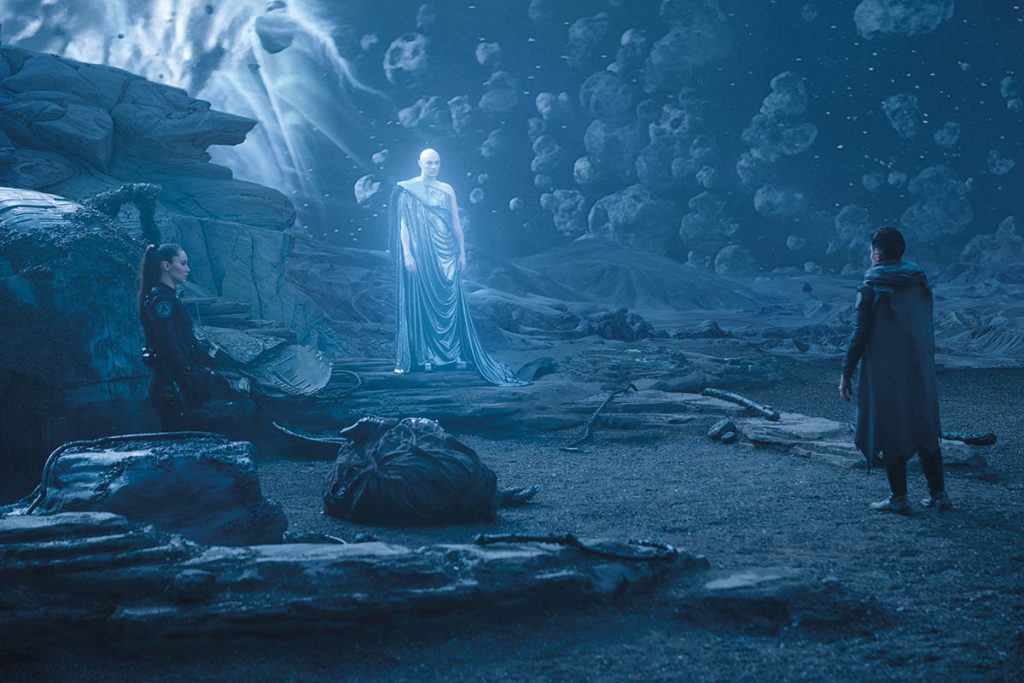
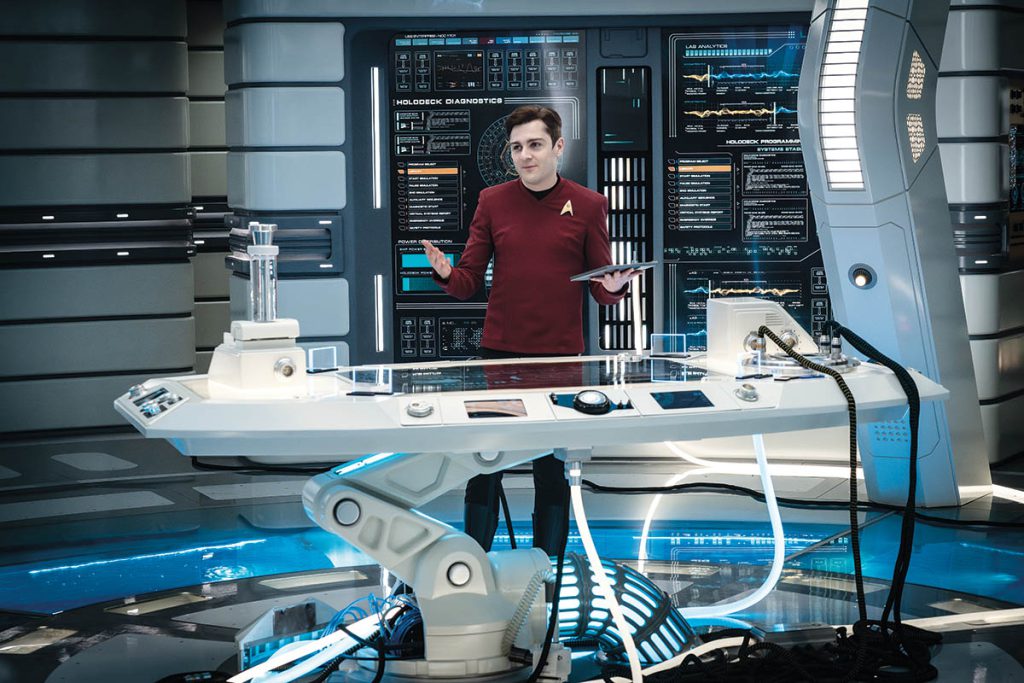
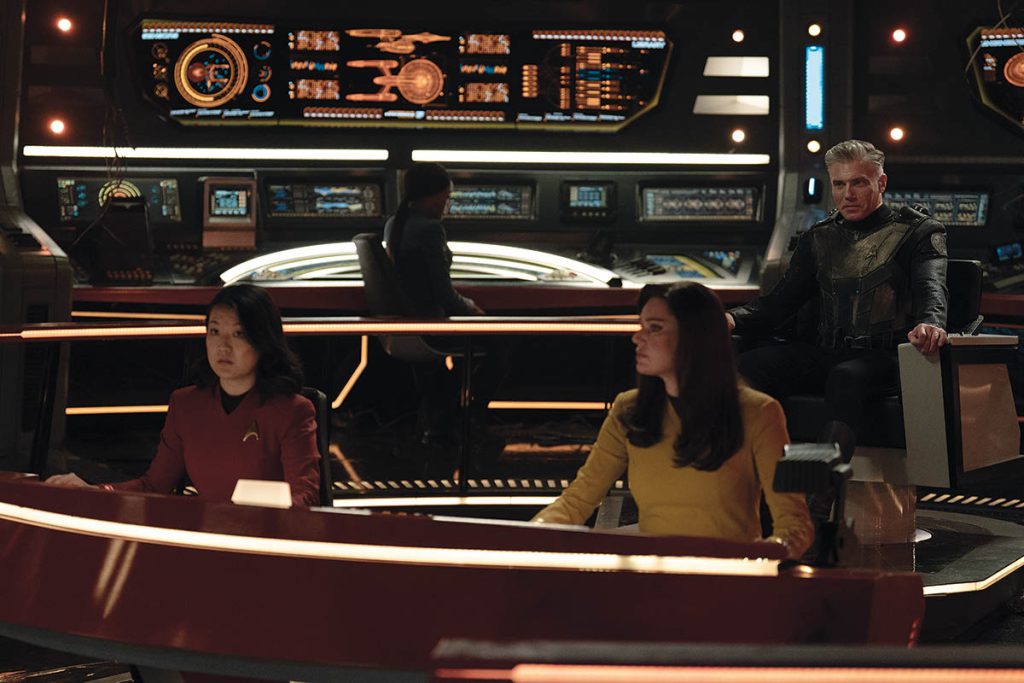
The 10 episodes feature between 2,000 and 2,500 visual effects shots by Ghost VFX, Storm VFX, Crafty Apes, Pixomondo, Zoic Studios, AB VFX, Cause and FX and an in-house team. “Nowadays, it’s hard to technically count because where does the work on the virtual environment and wall fit?” Tatosky observes. “Those would have been visual effects shots, but now they can point the camera almost anywhere once the environment is finished and get essentially beautiful visual effects shots in camera. It has upped the count of visual effects but in a completely different way.” Solar flares have a significant role to play in thwarting the Gorn. “I have to give credit to one of our DPs, Glen Keenan,” Zimmerman states. “I’ve probably known Glen for 15 years, and what’s fun with him is he understands visual effects, the camera and how things will end up in post so well. I lean into having good cinematography and DPs. If our work doesn’t match the lighting or if it’s not bright enough or too bright, all of those things are going to result in something that the viewer is going to catch. It’s an educated audience we have in Star Trek, and above and beyond that, in television in general. They know if it’s good visual effects or not. Having good cinematography and lighting to start with sets us on a path that is so much better than if you’re trying to fix something.”
“It’s important to give credit to Alex Wood, our Production Supervisor,” Zimmerman observes. “He’s our boots on the ground in Toronto and has been since Season 1 of Star Trek: Discovery. Alex has a great rapport with the different departments and helps us to walk through all of the meetings, shot listing, and interacting with directors in addition to Brian and me. Alex has built such a relationship with special effects and stunts that they know what we’re thinking, and we get what they’re thinking. Most of the time, we are in the ballpark when we start, in terms of the expectation for how somebody will approach something.” Another unsung hero is the in-house visual effects team. “I’m not sure we would be here without the in-house team,” Zimmerman admits. “They’re like the Navy SEALs of visual effects. Our team involves comp and CG, and has grown not only in the number of shots but also in the scope of what they’re able to take on now, finishing shots and beautiful CG things that we probably didn’t have the capacity to take on early on. They also help us with look development and setting the tone for things. When we go to the vendor, we’re not saying, ‘R&D something for us.’ We’re saying, ‘Here’s the new script and the idea. This is it in a shot. Take that and roll it into 25 shots.’”
Season 3 was about refining the virtual environment process. “We knew there was interest in doing more with that, to go to new places that we haven’t seen before, to go to more complex places that we’ve seen before and to push the wall to as close to failure as possible but still working so we can get the most detail, animation and lights in there,” Tatosky states. “We want to do better and be more creative than the season before, and do less of the fixing of the mistakes by thinking ahead.” There is no shortage of complex shots. “Just in Episode 301 alone, there are some massively long fly-throughs of the Gorn cruiser coming from outside into space, flying down essentially into the set,” Tatosky notes. “That is a mammoth undertaking to make that all feel nice and to get the lighting, speed and feeling of it all right.”
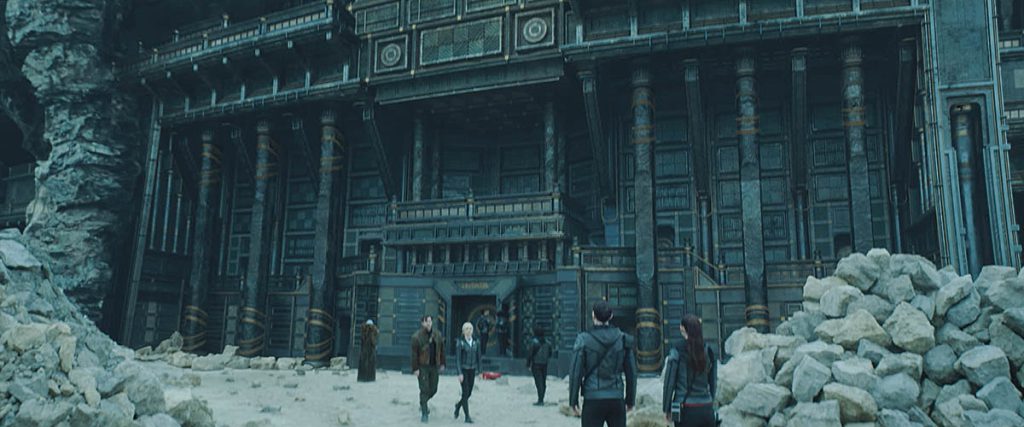
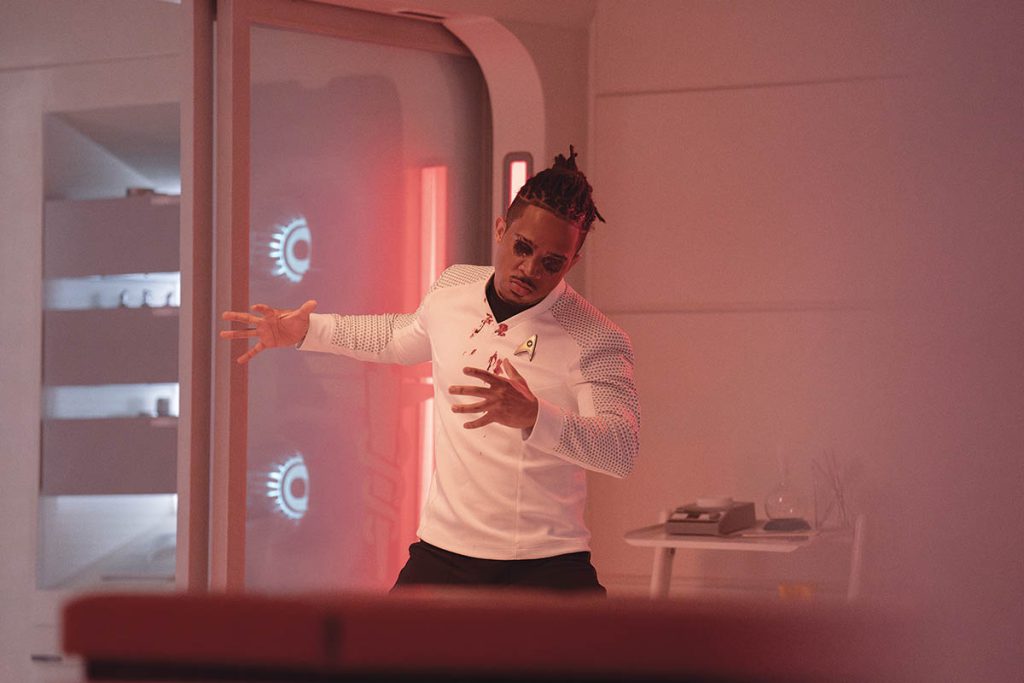
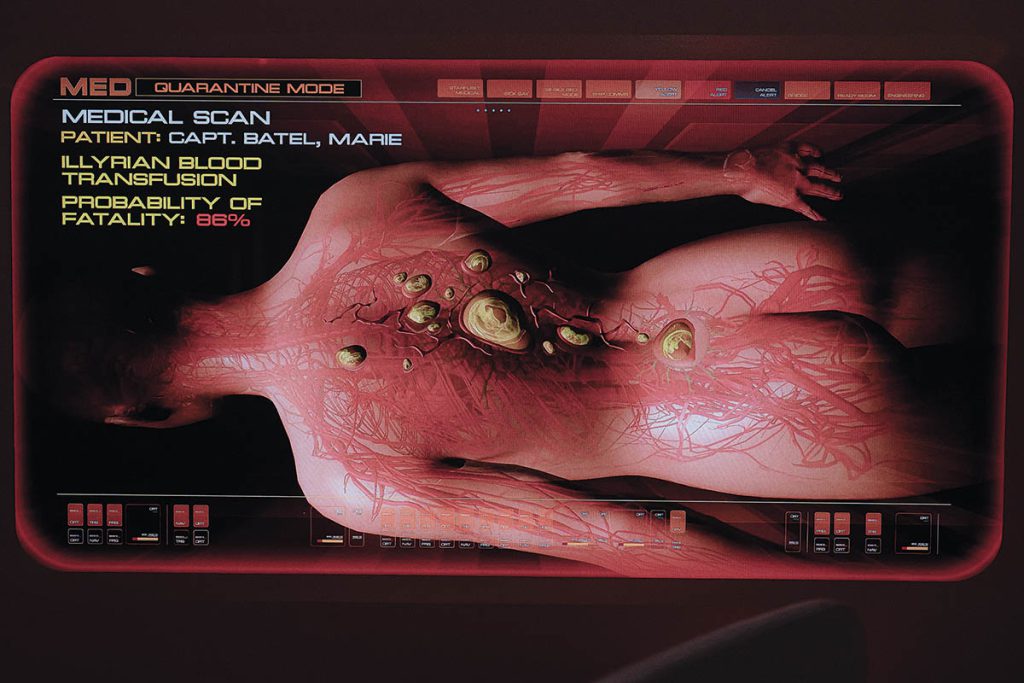
The production process has become a well-oiled machine due to the cross-pollination of filmmaking talent associated with the various Star Trek series. “Everybody is bringing that collective years of experience to the table every day,” Zimmerman remarks. “In a lot of ways, I don’t think there is anything anyone is going to come up with that will scare anybody because someone is going to go, ‘Remember when we did this?’” There is a broad range of visual effects work. “We’ve always got our Enterprise shots, which never get old,” Zimmerman reflects. “That being said, it’s nice to explore the virtual production and scope of the worlds we’re building, and the creatures have been satisfying. We always get there, and it always works out in a good way. It’s not like we just get it done. It’s always something we’re proud of by the end of the season.”